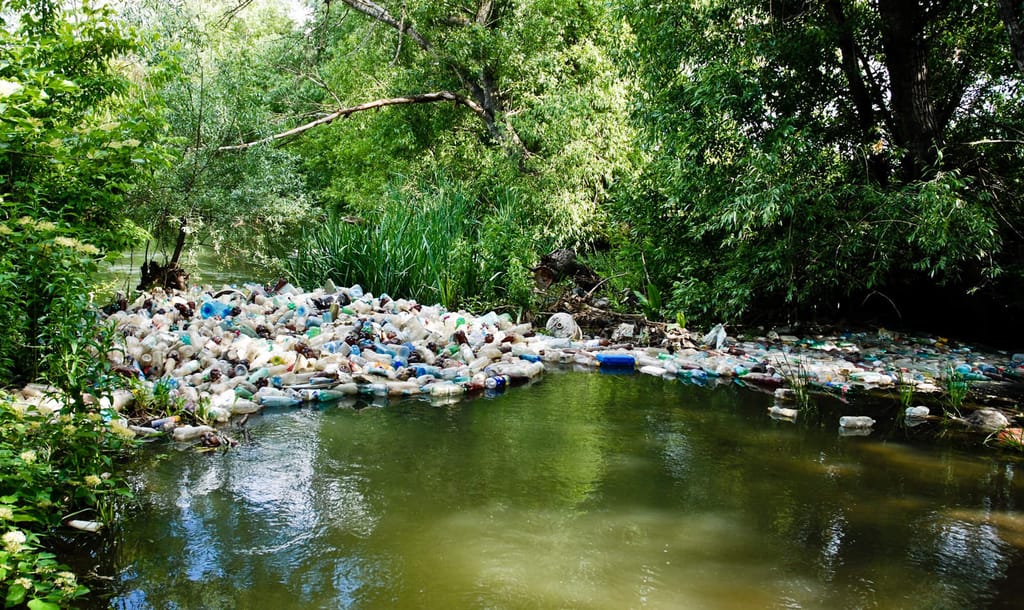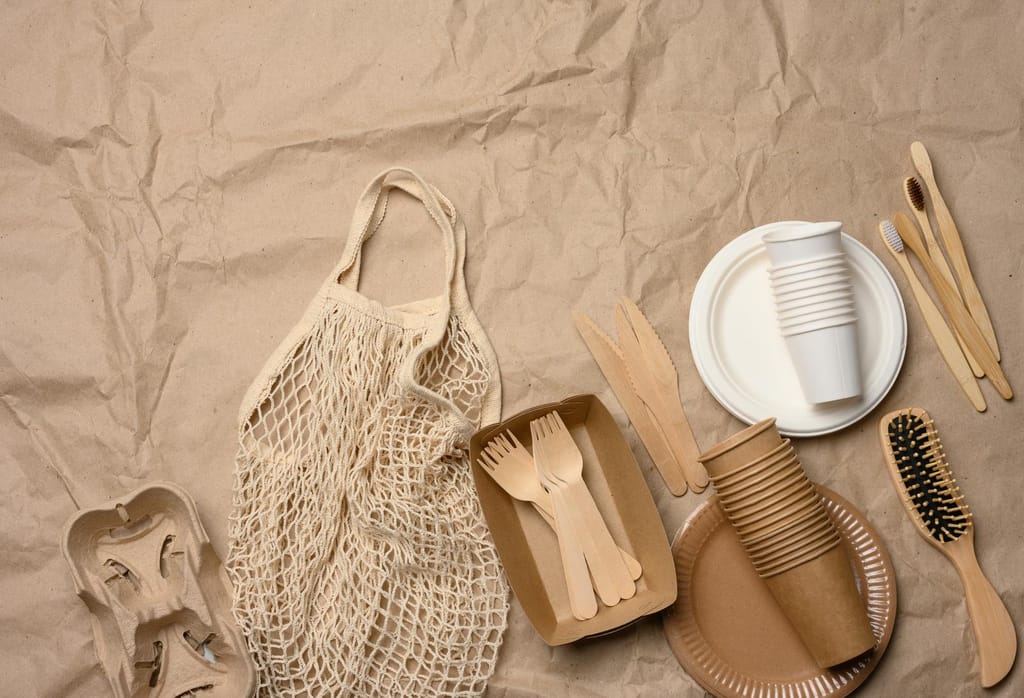What is biodegradable?
Biodegradable materials are those that can be broken down and recycled into the environment by microorganisms. These materials are typically derived from natural sources, such as plants or animals, and can be converted into other forms of nutrients that other living things can use. We know this process as biodegradation and is an important part of the natural cycle of life. Examples of these materials include paper products, food scraps, and even some plastics. By using environmentally safe materials, we can help reduce the amount of waste that is sent to landfills and help reduce our carbon footprint.

Biodegradation
Biodegradable materials are substances that can be broken down through natural processes, such as composting and anaerobic digestion, into harmless byproducts. We know this process as biodegradation and is essential in the natural cycle of breaking down organic matter, such as food scraps, leaves, and other plant matter. Environmentally safe materials are therefore considered to be more environmentally friendly than non-biodegradable materials, as their breakdown does not leave behind any harmful residues.
The process of biodegradation occurs when microorganisms, such as bacteria and fungi, break down complex organic molecules into simpler compounds. This is possible because of the enzymes produced by the microorganisms, which can break down the molecules into smaller pieces. We can then use these smaller pieces as food or energy sources for the microorganisms. As the microorganisms digest the molecules, it converted the materials into carbon dioxide, water, and other compounds, which are then released into the environment. The rate at which biodegradable materials breakdown will depend on the type of material and the environment in which it is exposed.
Materials that are composed of simple molecules, such as paper and food scraps, will break down more quickly than materials composed of complex molecules, such as petroleum-based plastics. In addition, materials that are exposed to warm and moist conditions will degrade faster than those that are exposed to dry and cold conditions.
Biodegradable materials are becoming increasingly important as the world faces growing environmental challenges. Using environmentally safe materials helps to reduce the amount of non-biodegradable waste that is sent to landfill, as they do not remain in the environment for long periods of time. These materials can replace non-biodegradable materials in many products and packaging, helping to reduce the amount of waste generated.
The benefits of biodegradables
Biodegradable products offer a range of advantages that can improve our everyday lives. By using environmentally safe products, we can contribute positively to the environment and reduce our carbon footprint. They make these products using natural materials microorganisms can easily break that down in the environment. They are non-toxic and don’t produce hazardous waste that can pollute the environment. This makes them an ideal choice for people looking to reduce their environmental impact. Another benefit of environmentally safe products is that they can help reduce our reliance on plastic. Plastic pollution is a major problem, with plastic waste accounting for around 8 million tons of waste entering the ocean each year.
By using biodegradable alternatives, we can help reduce the amount of plastic being produced and reduce the amount of plastic waste entering the environment. Environmentally safe products are also cost-effective. They are often cheaper than their non-biodegradable counterparts, meaning that they can help to reduce our household bills. Environmentally safe products are often more durable than traditional products, meaning that we can save money in the long run by not having to replace them as often. Finally, environmentally safe products are usually more aesthetically pleasing than traditional alternatives. They can add a touch of nature to our homes, making them more inviting and pleasant to be in.

Biodegradable plastics
Biodegradable plastics are materials made from renewable sources, such as corn or other plant-based products, natural processes can break that down. These materials offer an attractive alternative to traditional plastics, which are made from petroleum-based materials and can take centuries to degrade in the environment. Biodegradable plastics have a wide range of applications, from packaging and other single-use items to durable products such as car parts and furniture. This article summarizes environmentally-safe plastics and the benefits they offer, as well as the different biodegradable plastics and their applications.
Biodegradable plastics are materials made from renewable sources, such as corn or other plant-based products, natural processes can break that down. These materials offer an attractive alternative to traditional plastics, which are made from petroleum-based materials and can take centuries to degrade in the environment. Environmentally safe plastics break down over time, depending on their composition and the environment in which they are used. For example, some environmentally safe plastics may take several months to degrade in soil, while others may take years. These plastics are safe for the environment, meaning that they contain no toxic chemicals or metals.
Biodegradable plastics offer several benefits over traditional petroleum-based plastics, including:
Reduced environmental impact: Traditional plastics take centuries to degrade in the environment and can contribute to water and soil pollution. In contrast, biodegradable plastics break down over time, reducing the environmental impact of plastic waste.
Reduced costs: Biodegradable plastics are typically cheaper to produce than traditional plastics because of their renewable sources. This makes them a cost-effective choice for many applications.
Versatility: We can use biodegradable plastics for many applications, from packaging and single-use items to durable products such as car parts and furniture.
There are several types of biodegradable plastics, each with its own unique applications, including:
Polylactic acid (PLA): PLA is a biodegradable plastic made from corn or other plant-based materials. They commonly used it in packaging and other single-use items, as well as durable products such as car parts.
Thermoplastic starch (TPS): TPS is a biodegradable plastic made from starch-based materials, such as corn or potatoes. They commonly used it in packaging, food containers, and disposable cutlery.
Cellulose acetate (CA): CA is a biodegradable plastic made from plant-based cellulose. They commonly use it in packaging, food containers, and disposable cutlery.
Polyhydroxyalkanoates (PHA): PHA is a biodegradable plastic made from microorganisms. They commonly use it in packaging and other single-use items.

Helping the environment
The increasing popularity of biodegradable products has had a positive effect on the environment. Biodegradable products are those made of natural materials that can easily be broken down and absorbed into the environment. They eliminate the need for plastic and other non-biodegradable materials, helping to reduce environmental pollution, conserve resources, and protect the planet.
One of the major advantages of biodegradable products is that they are made from natural materials that are easily broken down into the environment. This means that they do not accumulate in landfills or other places, which can lead to a buildup of hazardous chemicals and other pollutants. In addition, biodegradable products do not require the same amount of energy and resources that are necessary for manufacturing non-biodegradable materials. This helps to reduce the strain on the environment and conserve resources.
Biodegradable products also help reduce the amount of waste that is generated by our society. They designed many of these products to be reused or recycled, which helps to reduce the amount of waste that is produced. This helps to reduce the need for landfills and other areas that can be sources of pollution. We often make biodegradable products with natural ingredients, which are less likely to have an adverse effect on the environment than synthetic materials.
Biodegradable products are often more affordable than their non-biodegradable counterparts. This helps to make them more accessible to people who might not afford other products. This helps to reduce the amount of money spent on non-biodegradable products and encourages people to purchase more Eco-friendly products.
Conclusion
Biodegradable materials are materials that can be broken down into natural elements by bacteria, fungi, and other living organisms. These materials are beneficial to the environment since they reduce the amount of waste that is produced, as well as reduce the amount of energy and resources needed to process and dispose of them.
Reference
- A. (2022, July 18). Biodegradable And Non-Biodegradable – Definition & Examples of Biodegradable And Non-Biodegradable. BYJUS. https://byjus.com/chemistry/biodegradable-and-non-biodegradable/
- AFPRelaxnews & By AFPRelaxnews. (2023, March 6). Is biodegradable better? Making sense of ‘compostable’ plastics. Forbes India. https://www.forbesindia.com/article/lifes/is-biodegradable-better-making-sense-of-compostable-plastics/83569/1
- Lui, R. (2022, November 8). What Does Biodegradable Mean? | Sparkoncept | Biodegradable plastic products. Sparkoncept | Biodegradable Plastic Products. https://sparkoncept.com/what-does-biodegradable-mean/
- Rigby, J. (2022, December 19). 13 Biodegradable Materials You Should Start Using in 2023. MindsetEco. https://mindseteco.co/biodegradable-materials/